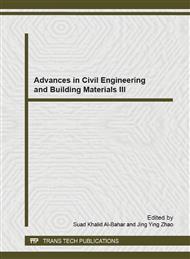[1]
JUAN M M, ARANTZA A.: Emotions in human and artificial inteligence[J]. Computers in Human Behavior vol. 2(2005), pp.323-341.
Google Scholar
[2]
L. Zhao: Speech Signal Processing[M], China Machine Press, Beijing (2003), in Chinese.
Google Scholar
[3]
Cynthia Breazeal: Emotion and sociable humanoid robots. Journal of Human-Computer Studies vol. 59(2003), pp.119-155.
DOI: 10.1016/s1071-5819(03)00018-1
Google Scholar
[4]
D. Ververidis and C. Kotropoulos: Emotional speech recognition: Resources, features, and methods. Speech Comunnication vol. 48(2006), p.1162–1181.
DOI: 10.1016/j.specom.2006.04.003
Google Scholar
[5]
Fuhai Li, Jinwen Ma, and Dezhi huang: MFCC and SVM Based Recognition of Chinese Vowels. Computational Intelligence and Security-International Conference, vol(2005), pp.812-819.
DOI: 10.1007/11596981_118
Google Scholar
[6]
Shao, Y., Liu, B., Li, Z.: Speaker Recognition System Based on MFCC and Weighted Vector Quantization. Computer Engineering and Applications, vol. 5(2002), p.127–128, in Chinese.
Google Scholar
[7]
Gan Lu, Long Zhou and Xinge You: An improved EMD analysis method for GPR images. International Conference on Computational and Information Sciences(2011), pp.104-107.
DOI: 10.1109/iccis.2011.77
Google Scholar
[8]
Yilin Lin, Gang Wei: Speech Emotion Recognition Based on HMM and SVM. Proceedings of the Fourth International Conference on Machine Learning and Cybernetics(2005), pp.18-21.
DOI: 10.1109/icmlc.2005.1527805
Google Scholar
[9]
Weijun Wang, Dongguang Zuo: Speech de-noising method based on adaptive filtering[J]. Modern Electronics Technique Vol. 35(2012), pp.84-90.
Google Scholar
[10]
Binbin Tu and Fengqin YU: Speech Emotion Recognition Based on Improved MFCC with EMD. Computer Engineering and Applications (2012), pp.119-122, in Chinese.
Google Scholar
[11]
Yujin Yuan, Peihua Zhao, and Qun Zhou: Research of Speaker Recognition Based on Combination of LPCC and MFCC. International Conference on Intelligent Computing and Intelligent Systems v3(2010), pp.765-767.
DOI: 10.1109/icicisys.2010.5658337
Google Scholar
[12]
Shiqing Zhang: Speech emotion recognition based on fuzzy least squares support vector machines[C]. Proceedings of Seventh World Congress on Intelligence Control and Automation. Chongqing(2008), pp.1299-1302.
DOI: 10.1109/wcica.2008.4594449
Google Scholar


